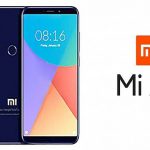Vivo V7 has got a lot to make the first impression pretty neat and clean, e.g. fashionable design, FullView display, snappy chipset, high resolution camera, and above-all, a fancier title. Vivo V7 is regarded as 2018 FIFA World Cup’s official smartphone. Other than that, Vivo V7 shows the continuous dedication by the emerging smartphone brand to improve its selfie photography technology, as Vivo mobile phone has put the 24MP camera on the front to make best selfies.

Vivo V7 also has its elder sibling, Vivo V7 Plus. Unlike other smartphone siblings, Vivo V7 Plus will come with only 0.2-inch larger display screen and only 8% higher battery capacity, which does not make it deserve to be called as Plus version of V7. However, we do not judge the phone, as the diversity has its own value. The purpose of this review is just to highlight the good and bad aspects found in this duo, and whether it is able to come up to our expectations or not.
What is missing in case of V7 Plus and which is included in Vivo V7 is the dual-band Wi-Fi support along with the fast-charging support. Moreover, Vivo V7 vs Vivo V7 Plus comparison shows that the Snapdragon 450 SoC has got the native support, but for some rationale, the company had decided not to execute them. This does not cut to the chase though, but we are pleased that there is going to be a dedicated microSD card slot along with dual SIM option in this phone.
Retail Box

A reasonably priced mid-range Vivo V7 smartphone will come with full pack of goodies in the retail package. It will have microUSB cable, 10W charger, thin silicone case, and a comfy pair of earbuds. All the units of Vivo V7 would also come with the screen protector, which will be factory-applied.
Design
Vivo V7 comes in a metallic appearance, but still it is actually made of plastic. This would only be known when you notice it too closely. This simply means that Vivo has done a great job in building the shell of V7 in such a manner that it would look like being made of metallic material. Moreover, speaking of the size, we can say that V7 will be only a bit short of V7+, as the difference is visible from the image below.

Vivo V7 has got FullView widescreen display, which is its most distinctive feature. Also, Vivo enters into the 18:9 bandwagon with the introduction of V7, as it will let the immersive experience with a few apps, and it will bring up the black strips within the other applications. This screen trend is latest and will not become old for a longer period of time at least, and hence the developers must optimize for this particular aspect ratio.

There is also 24MP selfie camera on the front, which also comes with LED flash. This flash will be useful for getting quite bright photo results. Similarly, in comparison to its elder sibling V7+, the company has not mentioned about the manufacturer of the screen glass of this phone, so we cannot tell anything about its toughness.
Vivo V7 body might look like plastic material, but good job is done in making it metal-like build, around which the antenna lines are carved especially on the top and bottom side. These antenna lines are there strictly for the decoration purposes, as these antennas could also be placed on the inside especially when you have put on the plastic cover.
The real metal piece is found only around the bulge of the rear camera of 16MP. The main camera has also got an LED flash, and near to which there is fingerprint sensor as well, which is always on and identifies the fingerprints quite instantaneously.
V7 weighs 139g and it is considered rather very light-weight phone. The sharp curves around the phone provide it a very strong grip, as you can simply use it while holding it from one hand, and hence it would be surprisingly pretty nice to handle such a large phone with quite greater ease.
Display
Vivo is the first smartphone company that will offer bezel-less and tall display in a mid-range smartphone. V7 will feature 18:9 display along with 5.7-inch diagonal. It will have the resolution of 1440 x 720 pixels. However, the pixel per inch density will be 282, in which we did not see any pixelization, yet the screen will be a bit classy.
Similarly, V7 will come with IPS LCD panel, which will have standard RGB pixel arrangement along with the equal number of subpixels for every primary color. Moreover, Vivo V7 display will have the maximum brightness of 470 nits along with the impressively deep black levels, which provide a great contrast ratio of 1:1593. We however did see the color rendering to be quite average, while the screen provides the accurate colors, which appear to be relatively bluish, while the white color representation is off. Similarly, the color rendering on the whole was average, which is good in case of a mid-range phone.
According to the tests performed by MPC Team, the sunlight legibility was below average, as V7 did suffer the washed-out colors in the sun. Apart from that, you might clearly see the screen contents on outdoors, but in brighter environment, you will need to turn the brightness to full.
Battery life
Vivo V7 will come with non-removable 3,000mAh battery. The phone will also come with standard 5V/2A plug. According to MPC team testing, the battery is consumed 25% in 30 minutes, while for a full recharge it takes about 3 hours. The endurance rating for Vivo V7 is about 77 hours, which is relatively low especially in case of a phone featuring 14nm chipset. The performance during call and other web test routines was good though, but video playback required heavy battery consumption.
Audio quality
Vivo V7 did pretty well in case of the active external amplified during our audio quality test. The loudness was above average, and the performance was nice. When you plug in the headphones, the volume drops to the average level, and you also listen to the stereo sounds as well as minor intermodulation distortion in to the mix. Still, the audio quality is overall decent.
Loudspeaker
In case of Vivo V7 loudspeaker, the sound did come quite pleasantly deep along with the richer tones, yet we experienced some distortion up to the maximum depending upon the sound played. The sound will be louder when it is needed, but some high-pitch sounds will reach up to the level of 90dB.
Software
Vivo V7 will be running on Android 7.1.2 Nougat OS, on top of which the custom Funtouch v3.2 overlay designed by Vivo itself will be installed. This would mean that it would come with the single-tiered interface, while there will not be any app drawer.
It is expected that the notifications will be called through the swipe option given on the top, but there will also be quick toggles that will be placed in a separate drawer, which is usually dragged from the bottom in case of iOS.
The software interface will be quite slick, and users will find some additional features on top of the Android Nougat, which will make it a very interesting gadget to use. Face Unlock, Smart Split and App Clone will also be there.

Vivo V7 fingerprint sensor would always remain on, and it will be quite fast as well as accurate. Face unlock can also be set up along with the fingerprint security, for which the user will need to keep the screen awoke for making it work.
Face recognition feature is also quite fast on regular basis. It will identify the face in quite faster manner, and that really means blazing-fast. According to Vivo, it will also be a very secure and reliable feature. It will however not be as secure or reliable as that of Face Unlock featured introduced in Apple iPhone X. But this sort of thing is becoming trendy and Chinese mobile phone manufacturers’ implementation of this feature is also good.
Vivo V7 will also come extensive range of gestures as well as motion functionalities, which are also found in the settings given in Smart motion feature. The Smart wake feature will be working alongside display off and will allow for drawing letters for launching the particular apps. It will also unlock through upward swipe without the hassle of lighting the screen beforehand. It will also launch the camera through downward swipe. Moreover, there will also be multiple settings for the camera launch or flashlight through the volume keys.
Many multimedia apps, which are deemed necessary, are also there, and they are part of the customized Funtouch launcher. Among these will be included the skilled iMusic player accompanies by the Deep Space proprietary sound effects, simple gallery, and a basic video app that will have pop-out play function.
Performance

Vivo V7 is actually powered by the Qualcomm Snapdragon 450 SoC. This is basically the reworked form of Snapdragon 625 SoC, which will be coming in the replacement of the Snapdragon 435. Snapdragon 450 will come with the eight 1.8GHz Cortex-A53 cores and will be giving 25% enhancement in case of the processing speed. It will also come with Adreno 506 GPU, which will also be helpful in increasing the gaming performance by up to 25%. The 4GB RAM will also be sufficient for high-class gaming and multitasking experience in V7.
The main highlight of this new chipset is that it is made on the 14nm process, which is the first one in 4-series chipsets. Moreover, Qualcomm also expects that it will offer 4 hours additional battery usage in comparison to the old chipset.
Camera

Vivo V7 will come with a 16MP camera on the rear, which will have f/2.0 lens as well as LED flash. It will have 24MP sensor on the front, which will have f/2.0 lens, but it will not have the LED flash. However, it would still be capable of stimulating the bokeh effect.
The interface of the camera app is quite simple, but it would be functional, and it will also be familiar with anyone who has used iPhone. The users will be able to switch between the basic stills, video and beautification mode. The user will however have to use both the hands, since there will be flash toggle, front camera switch, and the mode selector up in the portrait.
There will also be a professional mode in it, and that will be likeable for the photographers. This will provide lots of manual controls, in which exposure compensation, ISO sensitivity and shutter speed will be included.
Color saturation will also be neat and nice. It will also be a bit warm, but only in a good manner. There will also be a bit of noise, more specifically in the skies, but that will not be much however. The dynamic range will also be nice, and the user will not often need to manually engage it in the dedicated HDR mode.
There is also Auto HDR mode on V7, and it was smart in terms of taking the HDR shots when it was necessary. The approach of Vivo in dealing with the HDR processing is quite mature, as it helps in the preservation of highlights and also brings the details out from the shadows. Noise is also reduced in the dark corners, and that is another great thing for auto HDR mode.
The Vivo V7 camera will also be able to shoot 1080p videos at 30fps. It will however not have 60fps mode. The videos in V7 are made in the MP4 container, and video bitrate is also 17Mbps. The framerate is also quite stable in this phone. The stereo recording was experience in case of audio, which uses the AAC codec with the bitrate of 128kbps as well as 48KHz sampling.
Alternatives & Competition

Vivo V7 is unarguably the good and well-balanced mid-range smartphone, which features large screen display, impressive camera system as well as sharp performance. The phone barely fails in any department and impresses the users in every detail. Vivo V7 price in Pakistan is Rs. 27,999, and there are only few widescreen phones that lie in this price range.
The main opponent of Vivo V7 is Oppo F5, which features bigger as well as high resolution screen and a powerful chipset, and which also features the rear camera with a wider aperture and better low-light shots. Oppo F5 price in Pakistan is Rs. 31,900. Moreover, check our website for Vivo V7 vs Oppo F5 comparison.
Another alternative for Vivo V7 in Pakistan is the LG Q6, which is good for imaging skills as well as overall performance. However, it will not be good in selfie department in comparison of the Vivo V7 as well as Oppo F5. LG Q6 price in Pakistan currently stands at Rs. 26,500. Moreover, check our website for Vivo V7 vs LG Q6 comparison.
Another strong competitor is the Xiaomi Mi A1, which also has dual selfie camera as well as provides better portraits. It does not have the good screen aspect ratio as that of Vivo V7, but it does have higher pixel count, and it’s also made of real metal. Xiaomi Mi A1 price in Pakistan currently stands at Rs. 29,900. Moreover, check our website for Vivo V7 vs Xiaomi Mi A1 comparison.
Conclusion
When it comes to the main pros of Vivo V7, we have great widescreen, better performance, all-round camera with portrait shots, amazing selfie photos, and its ability to take the low-light photos, enhanced battery life, and reliable and fast fingerprint reader. On the con side of Vivo V7, we have Funtouch OS being the iOS copycat, no NFC support, plastic body and absence of fast charging feature.
Yet, consistency is the key that makes Vivo good in the smartphone business. Vivo V7 is not much different from Vivo V7 Plus, as the size is also about the same. Performance and screen display in V7 are also great, and the all-around camera experience is also good.
Lastly, Vivo V7 price is also quite reasonable, and it does have strong presence in the market. Vivo also has a good record of selling higher number of smartphones in Pakistan, and it is also quite popular among the youth in the country. Moreover, V7 is quite balanced and great smartphone, and in the given price range, Vivo V7 will definitely provide a great benefit to the users.
Care to know about MPC rating for Vivo V7? – It’s 8/10.













Vivo’s display is better than that of Xiaomi..